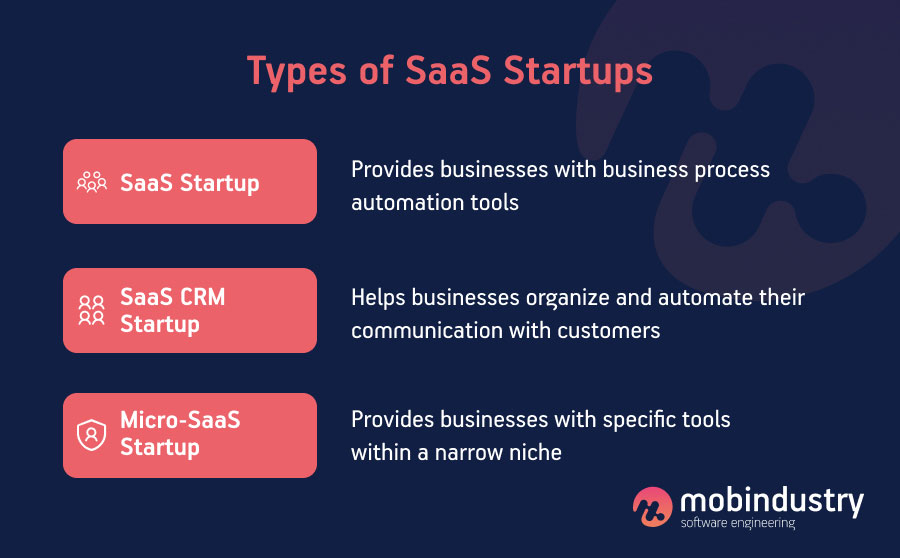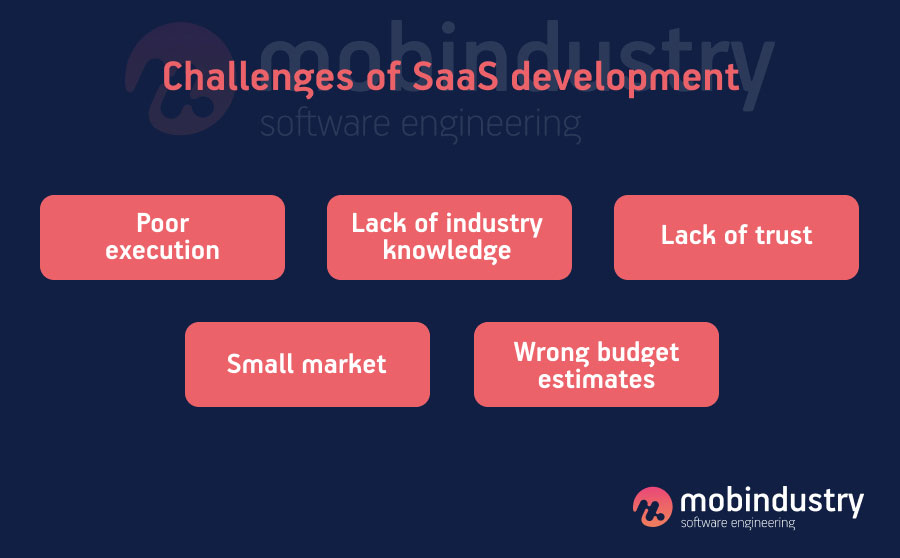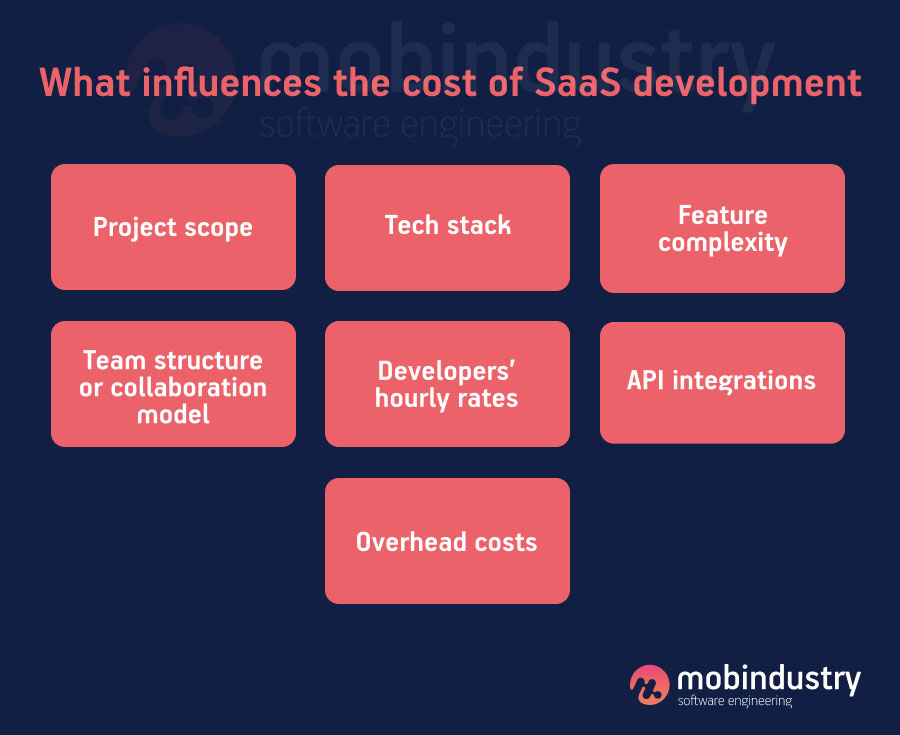How Much Does It Cost to Build a SaaS Product in 2023?
Building a software as a service (SaaS) product is one of the most lucrative startup ideas at the moment. SaaS products don’t require investments in hardware and are highly scalable. However, building good software around a useful idea isn’t cheap. Find out how much you’ll need to invest to enter the SaaS business
In April 2021, Gartner predicted that by the end of the year user spending on cloud-based products would rise by 23%, reaching $332.3 billion compared to $270 billion in 2020. Businesses are increasingly adopting cloud-based services, as they want to get high-quality tools without needing to invest thousands of dollars on custom development.
SaaS entrepreneurs, on the other hand, have the ability to scale their businesses and both return and increase their investments in software. With SaaS products, the limits are only in the market and your software’s technical capabilities.
With SaaS products, the limits are only in the market and your software’s technical capabilities
Though a SaaS business doesn’t need to invest in equipment, or products like many other businesses, developing a SaaS product is hardly cheap. However, there are ways to optimize your expenses without sacrificing quality, like building an MVP first and partnering with a SaaS app development company.
In this article, I’ll talk about the prices you can expect from outsourcing companies in Ukraine, as developing the same software in other countries like the US may be three to five times more expensive.
Types of SaaS platforms
Before talking about the cost of development, we need to define types of SaaS platforms, as they differ in complexity, size, and target market.

All SaaS platforms share these principles:
- They are available on a per-user subscription basis
- Users don’t need to download any software to their devices
- They are omnichannel and can be accessed from any device anywhere
- They are typically cheaper than traditional software
Now let’s talk about the differences. All SaaS platforms can be categorized according to their size, purpose, and domain.
- Customer relationship management (CRM) systems help to organize marketing and sales efforts in order to increase revenue and make communication with customers more personalized, timely, and efficient.
- Enterprise resource planning (ERP) software helps enterprises and large organizations manage their internal business processes like accounting, risk management, budgeting, and compliance.
- Accounting software simplifies and helps to automate financial operations including invoicing, transaction processing, billing, and tax calculations.
- Project management platforms help teams collaborate by using task tracking, document sharing, notifications, adjustable permissions, and so on.
- Content management system (CMS) and ecommerce platforms allow users to create their own ecommerce stores or other types of websites without having to invest in custom development.
- Communication platforms allow users to send and receive messages and files and are often used for corporate communication.
- HR software helps to organize recruiting and employee management. Such SaaS products allow HRs to schedule interviews, plan employee reviews, track performance, and store information about employees in one place.
- Payment and billing systems help businesses and individuals securely transfer funds between accounts. Unlike other SaaS solutions, payment systems usually get revenue from charging transaction fees rather than offering subscriptions.
Challenges of SaaS development
Challenges of SaaS development are risks you need to consider when calculating the budget for your SaaS product. Developing a cloud-based solution is a complicated process, so pitfalls are inevitable, and you should be ready for them.

Let’s find out what challenges can lead to increased development costs and how to avoid them and optimize your expenses.
Poor execution
There are dozens of technological issues that can come up in a SaaS development project. Poor architecture, lack of storage, bulky code that’s hard to maintain in the long run, and other issues can significantly increase the cost of your project and the time it takes to develop it.
It’s also vital to foresee any issues with scalability and maintainability that can arise after development, and for this you need an experienced development team that will be able to choose the best tech solutions for you.
A cloud-based architecture is different from a traditional architecture, so make sure your team has experience building cloud-based products.
Lack of industry knowledge
Sometimes, the idea for the SaaS product is great but the execution is poor because the product owner lacks specific industry expertise. A good SaaS product is meant to make a business’s operations easier, and for that it needs to reflect the way a particular business operates.
Involve an industry expert or show your product or idea to a focus group if you need more outside perspective from your target industry
Your understanding of the peculiarities of how businesses work in your target domain will be reflected in your product’s user experience. If a business can’t integrate your product in their existing daily operations, you will have a hard time selling it.
I recommend using SWOT analysis to define your product’s strengths, weaknesses, threats, and opportunities. If needed, involve an industry expert or even show your product or idea to a focus group. This will give you a better idea of how to design a SaaS product and which B2B SaaS pricing models are the most suitable for your industry.
Lack of trust
Trust is the most important factor in the success of a SaaS product. Unlike many other types of software products, most SaaS products have a direct impact on a business’s performance, processes, and eventually revenue. Choosing a SaaS product is not a task to be taken lightly, so your product will be tried and tested rigorously by the user.
Also, SaaS products handle lots of sensitive data about businesses and their customers, so security should be your number one priority. A security breach can be the first and last mistake your business makes, as it likely won’t be forgiven by customers.
To protect your and your users’ data, apply security best practices like two-factor authentication, data encryption, and access levels. Also, audit your software regularly and don’t store data that doesn’t affect how your SaaS product executes its tasks.
Small market
SaaS businesses are highly scalable. With the same software and investments, your earnings can vary greatly, and if you’ve done everything right and gotten rid of technological limitations, the only limit to your earnings is the size of your target market.
Focusing on particular industries is a trend in SaaS development, since it’s hard for new businesses to compete with large market leaders. The solution is building a focused product in a certain niche and making it more personalized than what any giant SaaS product can offer.
However, it’s easy to make a mistake and choose a niche that’s too small to be sustainable. In this case, no matter how amazing your product is, you won’t be able to get enough customers to return your investment.
Errors in calculating the budget
When you get a detailed estimate of the cost of SaaS product development, it’s important to remember that this product will require constant updates, optimizations, and new features in order to stay relevant. Because SaaS products are subscription-based, you need to constantly demonstrate value to your customers.
Maintenance is more important for SaaS products than for any other products, because user experience and security issues can cost you your customers who pay for your product regularly. This makes the audience of SaaS products more demanding and sensitive to poor quality.
Besides, you need to conduct constant checkups, code audits and perform security testing, in order to keep your product running smoothly. Some business owners forget about these constant expenses and don’t include them in their business plans.
Make sure to include ongoing expenses in your business plan and think about future improvements you’ll make to your product to keep customers satisfied.
Main factors that influence the cost of SaaS development
So, how much does it cost to start a SaaS company? Like in any development project, the final cost depends on a number of factors:
- Project scope
- Tech stack
- Feature complexity
- Team structure or collaboration model
- Developers’ hourly rates
- API integrations
- Overhead costs
Let’s talk about each of these factors in detail.

Project scope
The scope of a SaaS project is determined at the planning stage, and it depends on the type of platform you want to build, your target audience, and the business goals your SaaS product will fulfill.
SaaS tools typically have a smaller scope than SaaS platforms like CRMs. While SaaS tools are meant to solve one or two issues, SaaS platforms comprise multiple tools, and this expands their scope drastically.
You can always scale a tool to a platform, so if you’re working on your first SaaS project, I’d recommend building one tool as an MVP for further expansion.
Tech stack and functionality
Some technologies are faster to work with than others, and your choice of technologies can also influence the cost of your project.
However, functionality influences the cost much more than the technologies themselves. Complex features not only take longer to build but also have a higher risk of errors, so they need to be tested thoroughly at every step of development.
To optimize costs, I recommend you prioritize features and develop the most essential ones first. Your list of features will depend on your product type, your target audience, and the main problem your software should solve. Features that are common for most SaaS products are:
- Role-based access and permissions to protect sensitive data
- A dashboard and analytics to help businesses track their performance
- Omnichannel sign-in to allow users to access their profiles on all devices using a single set of credentials
- User activity tracking to detect any suspicious activity and protect data
Team structure
Your team structure and how you collaborate with developers also influences your project’s final cost. Hiring in-house is typically more expensive for companies, as they need to take care of all expenses like taxes, work spaces, equipment, sick leaves, vacations, and so on. Besides, it takes time to find a specialist and hire them for a competitive salary so they don’t leave in a few months for another company.
That’s why many SaaS businesses prefer to collaborate with software development companies or freelancers. Freelance developers require more management, and coordinating them with other team members like business analysts, designers, and quality assurance specialists can be tricky.
A SaaS app development company, on the other hand, provides you with a ready team immediately, and you pay only for the number of hours they put into developing your SaaS platform. In this case, the cost of creating a SaaS product is optimized, and you can save even more money by hiring specialists from countries like Ukraine with a relatively lower cost of living.
Developers’ hourly rates
Developers’ hourly rates influence the final project cost immensely. The same functionality of the same quality can be developed for $40,000 or $100,000 just depending on how much your development team charges per hour. Typically, the hourly rate depends on the country and on a developer’s skills.
Location, however, is the major factor. For example, in Ukraine, the average hourly rate for web development is $35, while in the US the same service will cost up to $150 per hour. So, the average startup cost for a SaaS product development will be different in various parts of the world.
API integration
APIs are an integral part of almost any software, and most businesses use them to accelerate development and improve the user experience. For a SaaS product, you’ll likely need both internal and external APIs. Internal APIs work like glue between your software components, and external APIs allow you to integrate your product with third-party services.
You need to be ready to invest in both developing APIs and paying for third-party services.
Overhead costs
Your investments don’t end with the release of your SaaS product, and there are many other costs you need to consider:
- Marketing and advertising. You need to attract users to your SaaS platform, and for this you’ll need to invest in marketing, paid advertising, influencer marketing, social media campaigns, and so on. Marketing expenses can reach the cost of the product itself, and you need to be ready for this.
- Legal costs. Compliance with federal and local legislation is vital for any SaaS product, especially if it’s in the finance or healthcare industry.
- Updates. You need to constantly update your software to avoid security and user experience issues, and you also need to add new features to show value to your subscribers.
- Technical support. Any software needs regular checks and bug fixes, as nothing is perfect. Also, new devices that come out may behave differently with your software, so you need to provide tech support to your customers.
- Customer support. You’ll need a professional team to consult with customers, help them pick the perfect plan for their needs, and adjust your software to their business processes.
- Staff training. Your customer support team will need regular training when new features come out.
How much does it cost to build a SaaS product?
The total cost to build a SaaS product will depend on where your team’s located and how complex your project is. Here’s a breakdown of the whole SaaS development process with an estimate of how much each stage will cost. For this estimate, I used average prices for software development companies in Eastern Europe.
Planning and discovery
During a discovery phase, a business analyst extracts your business needs and turns them into a technical specification. At this point, your vendor also conducts competitor research and market analysis and creates a list of features required to achieve your business goals.
While conducting planning and discovery activities, you’ll pay for a business analyst’s time, and as a result you’ll get:
- A technical specification
- Wireframes
- A detailed development plan
- A plan for an MVP
The planning process usually takes 40 to 260 hours depending on the project’s complexity.
UI/UX design
The user interface (UI) and user experience (UX) in your SaaS solution should be intuitive and reflect the peculiarities of your target industry. By this, I mean you should use terms and symbols in the UI that are common in the industry, and you should also keep the UX pipeline convenient for your clients’ business processes.
The time required for UI and UX design depends on the product’s complexity and size, and is usually around three weeks. UI/UX design typically costs $15 to $40 per hour with companies in Eastern Europe.
Frontend development
After you find out what functionality you need for your product, it’s time to choose the tech stack. Your development team should help you with this and should offer several options to meet your individual needs.
The time needed for frontend development depends on the project’s scope, and the hourly rates can be anywhere between $25 to $60.
Also, remember that every step of the development process requires quality assurance and project management, and you’ll need to pay for these specialists’ time as well.
Backend development
Building the server side of your software can take different amounts of time depending on your strategy. You can either build your backend from scratch or use a backend as a service (BaaS) product, which will drastically reduce the development time.
A custom backend gives you more flexibility, while BaaS frees you from developing your own infrastructure but simultaneously makes you dependent on a service provider’s infrastructure. If something goes wrong on the service provider’s side, there will be nothing you can do.
However, BaaS is great for an MVP: you can always move to your custom backend later. Building the server side of your SaaS app usually takes up to 800 hours and costs $25 to $60 per hour depending on your vendor.
Maintenance
Post-release maintenance can reach up to 50% of your initial development budget annually just to update system components, conduct regular security checks, run tests, fix bugs, and so on.
Adding new features won’t be included in the maintenance plan, as it’s considered development that requires changes to both the frontend and backend of your SaaS application.
Final thoughts
As you can see, it’s hard to tell how much a certain SaaS project will cost, as SaaS products are all very different and the price depends on a multitude of factors. Even the initial estimate you initially get from your vendor after sharing details about your business needs will be rather approximate.
To calculate how much SaaS development costs more accurately, you need to go through a discovery process and create a technical specification that will contain detailed information about your project’s features, technologies, and third-party services. Only after this will you be able to get a detailed estimate of the SaaS product development cost.
To calculate how much SaaS development costs more accurately, you need to go through a discovery process
You can create a technical specification with the help of any company or even on your own if you have internal technical expertise. After you have your technical specification, you can ask for quotes from different software development companies. We can help you with SaaS development at any stage of your project, from creating a specification to maintaining your software.
Contact us to get a preliminary estimate and our suggestions on how to launch a SaaS product based on your idea.
Frequently Asked Questions
- Project scope
- Tech stack
- Feature complexity
- Team structure or collaboration model
- Developers’ hourly rates
- API integrations
- Overhead costs

